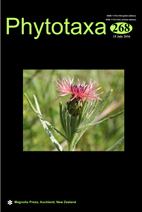Abstract
Seychellaria barbata, a new species of Triuridaceae, is described and illustrated. The species was discovered in 2015 during fieldwork in Marojejy National Park (Northern Madagascar). Seychellaria barbata possesses long hairs at the apex and margins of the larger tepals of male flowers, whereas all its congeners are characterized by glabrous perianths. This feature is also known in a closely related genus Sciaphila, which makes the newly discovered species crucial for reassessing generic delimitations within the tribe Sciaphileae. The new species is also characterized by 6–7 flowers per inflorescence, 1 fully developed flower per node, the presence of bracteoles free from bracts, absence of connective appendages, clavate staminodes slightly longer than the stamens, and ca. 40–50 carpels in the female flowers. Distribution of the genus Seychellaria in Madagascar is discussed. An updated key to all currently known species of Seychellaria is provided. Diversity of inflorescence architecture in Seychellaria is reviewed; S. barbata is reported to possess aborted flowers in bracteole axils; presence/absence of bracteoles is suggested as the most important feature of the inflorescence in this genus as it distinguishes thyrses from racemes. The uncertain morphological nature of the bracteoles, being fused to the bracts, is highlighted and their similarity to bi- or three-lobed bracts indicated.

